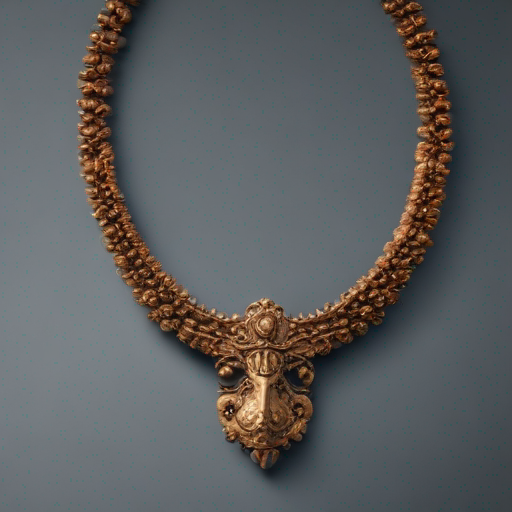
How to Remove Rust from Necklace: A Step-by-Step Guide
Rust on a necklace can be a frustrating problem, especially if you've grown attached to the piece. Not only does rust affect the appearance of your jewelry, but it can also cause damage and weaken its structural integrity over time. In this article, we'll explore various methods for removing rust from a necklace, including chemical-based and non-chemical approaches.
Understanding Rust
Before we dive into removal methods, let's take a moment to understand what rust is and how it forms. Rust is a type of corrosion that occurs when metal reacts with oxygen and moisture in the air. This reaction causes the metal to break down and form an iron oxide, which appears as a reddish-brown flake or powder.
Rust can form on any metal surface, including jewelry like necklaces, earrings, and rings. Factors such as humidity, saltwater exposure, and poor storage conditions can contribute to rust formation.
Chemical-Based Methods
One of the most common methods for removing rust from a necklace is using chemical-based solutions. Here are a few approaches:
- Vinegar and Water: Mix equal parts vinegar and water in a bowl. Soak the rusty necklace in the solution for several hours or overnight. The acid in the vinegar will help break down the rust.
- Baking Soda and Hydrogen Peroxide: Create a paste by mixing baking soda and hydrogen peroxide. Apply the paste to the rusty area and let it sit for about an hour. The baking soda helps lift the rust, while the hydrogen peroxide acts as a mild oxidizer.
- Bar Keepers Friend: This powdered cleanser is specifically designed to remove rust and tarnish from metal surfaces. Sprinkle Bar Keepers Friend onto the rusty area, add a little water to make a paste, and scrub gently with a soft cloth or brush.
Non-Chemical Methods
If you prefer to avoid chemical-based solutions or if your necklace contains sensitive materials like pearls or gemstones, there are non-chemical methods to consider:
- Olive Oil and Lemon Juice: Mix equal parts olive oil and lemon juice in a small bowl. Apply the solution to the rusty area using a soft cloth or cotton swab. The acidity in the lemon juice helps break down the rust.
- Baking Soda and Water Scrub: Create a paste by mixing baking soda and water. Apply the paste to the rusty area and gently scrub with a soft-bristled brush or toothbrush.
- Dish Soap and Warm Water Soak: Mix dish soap with warm water in a bowl. Soak the necklace for several hours or overnight, then rinse and dry as usual.
Table: Comparison of Chemical-Based and Non-Chemical Methods
| Method | Effectiveness | Ease of Use |
|---|---|---|
| Vinegar and Water | High | Easy |
| Baking Soda and Hydrogen Peroxide | Medium-High | Moderate |
| Bar Keepers Friend | High | Difficult |
| Olive Oil and Lemon Juice | Low-Medium | Easy |
| Baking Soda and Water Scrub | Medium | Moderate |
| Dish Soap and Warm Water Soak | Low | Easy |
Key Takeaways
- Rust removal methods may require patience, as some solutions need time to work.
- Always test a small, inconspicuous area of the necklace before applying any rust removal method.
- Avoid using harsh chemicals or abrasive materials that could damage your jewelry.
- Consider the type of metal and materials used in your necklace when choosing a rust removal method.
For more information on how to remove rust from a necklace, check out How to Remove Rust from Necklace at Rather Pretty.
Additional Tips
- Store your jewelry in a cool, dry place to prevent rust formation.
- Avoid exposing your jewelry to saltwater or harsh chemicals, as these can contribute to rust formation.
- Consider using a jewelry cleaning solution specifically designed for removing tarnish and rust.
By following these step-by-step guides and taking the right precautions, you'll be able to remove rust from your necklace and keep it looking its best. Remember to always prioritize the safety and integrity of your jewelry when attempting to remove rust or corrosion.

